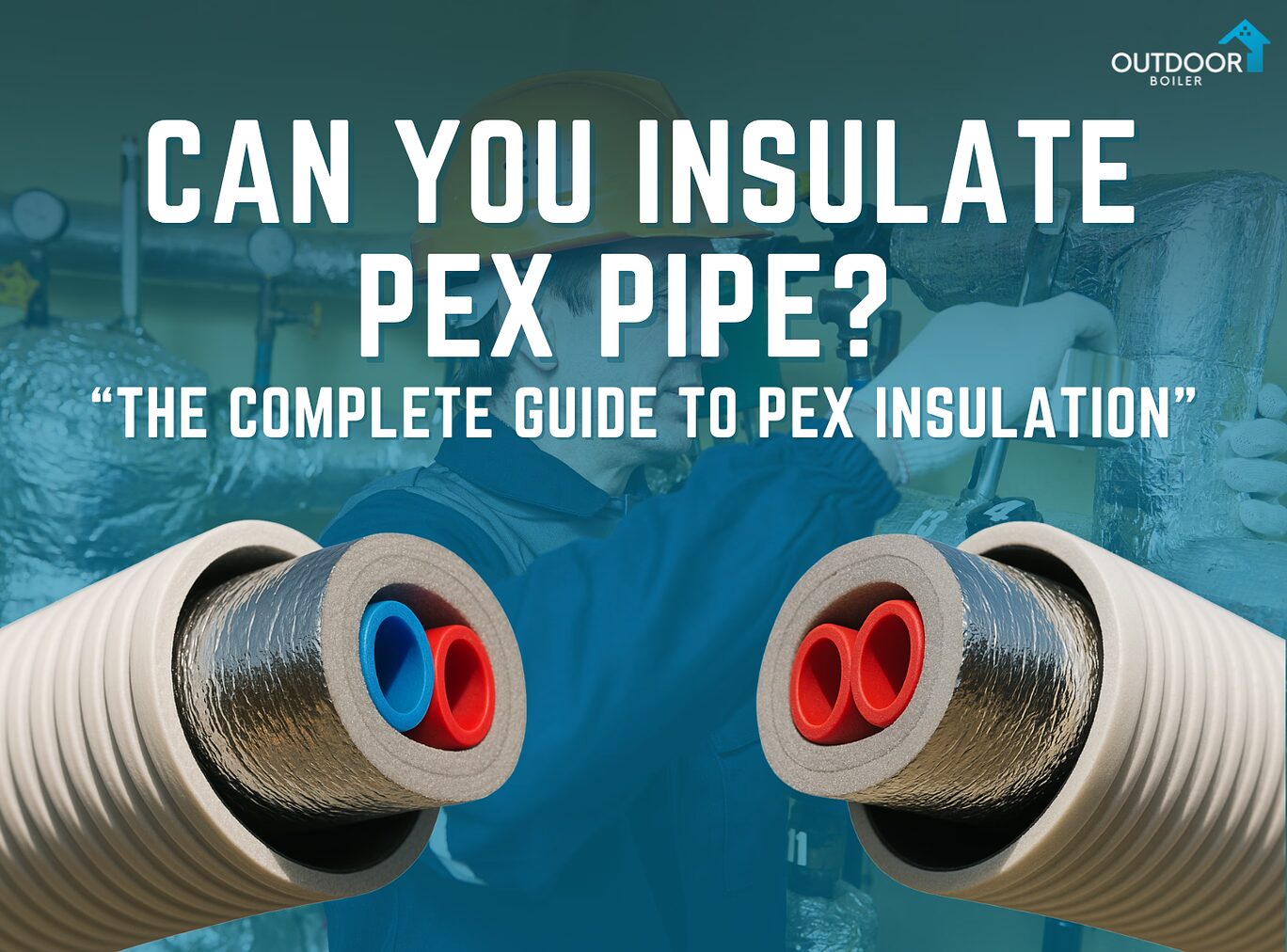“The Complete Guide to PEX Insulation”
PEX or cross-linked polyethylene pipes have changed the face of modern plumbing owing to their flexibility, resistance to corrosion, and ease of installation. In contrast to rigid copper and PVC piping, PEX tubing easily bends at corners and accommodates slight settlement of building footings, ideal for residential and commercial projects. But a common question among homeowners is, “Can you insulate PEX pipe?” Absolutely, and holding it right now is critical to address key vulnerabilities. Cold temperatures can freeze and rupture uninsulated PEX, while uninsulated hot water lines lose heat, raising energy bills and decreasing the efficiency of the system. Whereas properly insulated pipes are more resistant to outside elements, as well as extreme heat and cold temperatures.
This guide covers all the bases on PEX insulation, from how to insulate PEX, which materials to use, all the way to avoiding common mistakes. Whether you’re adding to an aging home or creating a new plumbing setup, learning how to properly insulate PEX pipes can keep you from expensive repairs, maximize energy efficiency, and ultimately contribute to a long-lasting setup. Below, we’ll discuss the benefits of insulation, compare insulation types, and share actionable tips that homeowners and DIYers can leverage all year long to protect their plumbing systems.
Why Insulate PEX Pipes?
In many cases, you can and should insulate PEX pipe. There are several reasons you would need to insulate PEX tubing, the most obvious being preventing freezing in cold weather, for maintaining hot water temperature, so that it is more energy-efficient, or to reduce the amount of condensation that forms on cold water lines. Foam pipe insulation, fiberglass insulation, and rubber insulation are all common types of insulation that provide different degrees of thermal resistance and protection. Proper insulation also increases the longevity of PEX plumbing systems and prevents possible water damage that can accrue if the pipes freeze and burst.
Insulating PEX pipes offers several key benefits:
- Energy Efficiency
For hot water lines, wrapping them in PEX greatly curtails heat loss, allowing the heat to be retained as the water moves through your plumbing system. This reduces energy consumption because the heating system must work harder to keep the water at the right temperature. For long runs of pipe, particularly those that are buried, or in colder climates, insulation can provide a significant return in terms of utility savings over time. What is more, insulated PEX pipes have better heat retention compared to uninsulated pipes, providing an economical and environmentally friendly option for energy-sensitive homeowners.
- Freeze Protection
While PEX pipes are more freezer resistant than other PEX alternatives, extreme cold temperatures can still do some damage. During extreme winters, PEX pipes offer added protection against freezing by insulating them. Pipes are prone to bursting and expensive fixes, particularly in areas that are exposed, such as crawlspaces or outside walls. Insulation makes it less likely to freeze, which in subzero conditions leads to thawing and bursting pipes, thus protecting the system from damage and keeping the water flowing.
Learn more about how you can protect your PEX Pipe from freezing.
- Condensation Control
Pipes that run with cold water draw moisture from the warm air around the pipes, producing condensation. This moisture can then drip onto the surface, leading to mold or structural damage over time. To stop condensation, it is better to insulate a PEX pipe so it can maintain its temperature evenly from the outside of the pipe surface. This is especially helpful in humid climates or where pipes run near wood or drywall. This serves to create a healthier home environment and protects the longevity of the home by controlling condensation.
Types of Insulation for PEX Pipes
There are indeed various insulation options suitable for PEX pipes:
- Foam Pipe Insulation
This is a common insulating PEX pipe solution that is inexpensive. Foam insulation sleeves are available in many arrays of pipe diameters and use a split design for easy installation. They offer cost-effective thermal protection and are suitable for most residential applications.
- Reflective Foil Insulation
Such a type of insulation is ideal in regions with temperature extremes. It works by reflecting heat into hot water pipes and preventing heat gain in cold water lines. This is what makes it a great option for pipes that are exposed to a lot of temperature changes… like in attics or unconditioned spaces.
- Tubular Insulation
Tubular insulation, made up of pre-formed foam tubes, provides effective protection from heat loss and freezing. Easy to install and gives uniform insulation along the whole length of the pipe.
- Radiant Barrier Insulation
This is one of the more efficient types of insulation available for PEX pipe. It has a heavy-duty closed-cell polyethylene material with excellent impact-damping and chemical-resistance properties. Radiant barrier insulation offers particularly excellent heat loss reduction, with test results indicating less than 1°F of temperature drop per 100 feet of pipe. It also provides great flexibility, so it can be installed in tight spaces more easily.
Several requirements need to be fulfilled when selecting insulation for PEX pipes , which include the pipe’s location, the local climate, as well as insulation requirements. Different types of insulation have different strengths, and the right one will depend on your specific situation and needs. Check out the Outdoor Boiler Insulated PEX Pipe.
Best Practices for Insulating PEX Pipes
To ensure optimal performance and longevity of your PEX pipes, follow these best practices for insulation:
- Choose the Right Material
A high-temperature system’s insulation material selection is critical. Make sure the insulation is rated for use at between 180–190°F, as you do not want it to melt or degrade. Radiant barrier insulation is commonly used for its durability, flexibility, and optimal heat loss reduction. Standard applications can also use foam pipe insulation or tubular insulation as they are both effective solutions.
- Focus on Vulnerable Areas
Give extra attention to areas where pipes are most susceptible to temperature extremes, like crawlspaces, attics, basements, or exterior walls. These areas are particularly susceptible to winter freezing or heat loss in hot water lines. By properly insulating these areas, you will keep your plumbing system safe from damage as well as be efficient all year round.
- Proper Installation
It should fit closely around the PEX pipe with no gaps, if possible since gaps can result in heat loss and freezing. Pre-formed tubular insulation or foam sleeves with a split design fit easily around pipes and provide evenly distributed coverage. If the system will be installed outdoors, or if lines will be located in the ground, bundling insulation with a protective conduit or heat tape as an added measure against freezing is an appropriate option.
Common Mistakes to Avoid
- Using Low-Temperature Foam Insulation
Using foam insulation that can’t tolerate high temperatures is one of the top mistakes. PEX pipes, for transporting hot water, can reach temperatures of 180–190°F or higher, and lower temperature foam insulation can melt and stick to the pipe. Not only does this damage the insulation that protects the pipe itself, possibly costs thousands in repairs. To prevent this issue, be sure to always use materials that are rated for high-temperature applications.
- Over-Insulating Pipes in Heated Areas
Insulation is important in areas that are exposed to the cold, but if pipes run through heated areas, it is easy to make them too cold by using too much insulation. Exceptionally excessive insulation can remove an underground pipe far from its heat source, allowing it to cool rather than remain warm. This is particularly a problem in crawlspaces or where there are forced hot water systems. In order not to make such a mistake, you need to balance insulation with adequate exposure per heat source.
- Neglecting Local Plumbing Codes
An all-too-common mistake is failure to heed local plumbing codes. If you’re in a region of the country that is subject to the provisions of the International Energy Conservation Code (IECC), as we are, there are specific requirements for pipe insulation, especially in an outdoor, exposed situation. Not complying with these laws can lead to penalties or an inefficient plumbing system. As with any aspect of home construction, always check local codes and guidelines before insulating PEX pipes, and make sure to do so correctly (if advised).
Conclusion
Insulation of PEX pipes is the easiest, but very important step, in keeping an efficient and durable plumbing system. Using foam sleeves, radiant barrier insulation or tubular insulation, along with best practices when determining the best insulation material to use, a homeowner can save on energy costs, prevent their pipes from freezing, and help avoid moisture-related issues such as mold or structural damage. Pipes in vulnerable areas such as crawlspaces, attics, or external walls where temperatures fluctuate more easily are hindered in their expansion or contraction by insulation, a protective barrier that keeps them from getting too cold. For instance, radiant barrier insulation reduces heat loss along hot water lines, and foam insulation keeps cold water pipes from freezing during severe winters. For homeowners concerned about the reliability of their plumbing system year-round, this process allows them to detect the vulnerabilities that can lead to costly repairs and inconvenient disruptions.
Whether you’re putting in new pipes or retrofitting existing ones, make a solid investment and insulate them; you’ll be glad you made this decision down the road. Insulation also increases the life of PEX pipes and promotes energy-efficient practices at both commercial and industrial levels, and helps in reducing electricity bills and energy depletion. Along with compliance with local plumbing codes, avoiding rookie blunders—like using low-temperature foam or over-insulating heated areas—keeps things running smoothly. Homeowners who embrace the proactive philosophy of plumbing insulation can turn their systems into reliable, efficient, and energy-saving components that adapt to the challenges of daily wear and tear. Proper planning will grant you stability in the plumbing system, plus the benefits of a well-insulated house for many seasons.
FAQs
- Should PEX pipes be insulated?
Insulation can be beneficial even if PEX pipes are about three times less thermally conductive than metal pipes. If thermal conductivity is low, the thermal “loss” has already happened, but insulation can reduce this loss even further, prevent condensation on the pipes, and decrease noise from the pipes.
- Is PEX ok for outdoor use?
Above-ground outdoor applications: Can I work with PEX? No. PEX is only intended for indoor and buried applications. Aboveground, outdoor use is not recommended. Construction can include short exposures to the sun, but these should not affect the manufacturer’s expectations.
- What is negative about PEX?
Although PEX pipes are quite thick, they are still vulnerable to rodent damage that can lead to cracked or broken pipes. Possible Leaching: A few homeowners and plumbing companies have claimed that they’ve experienced PEX piping leaching harmful contaminants (like BPA—Bisphenol A) into the water supply





























